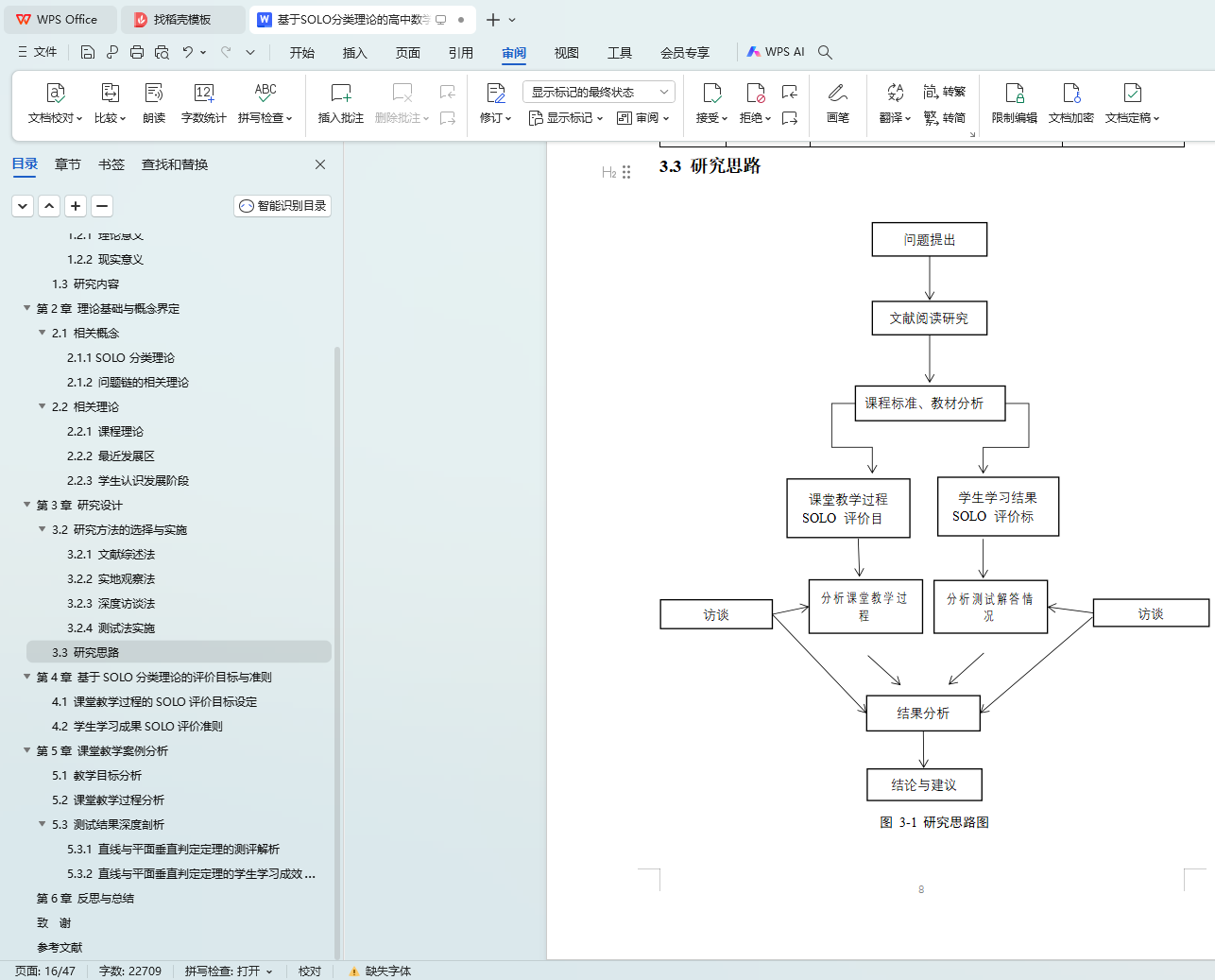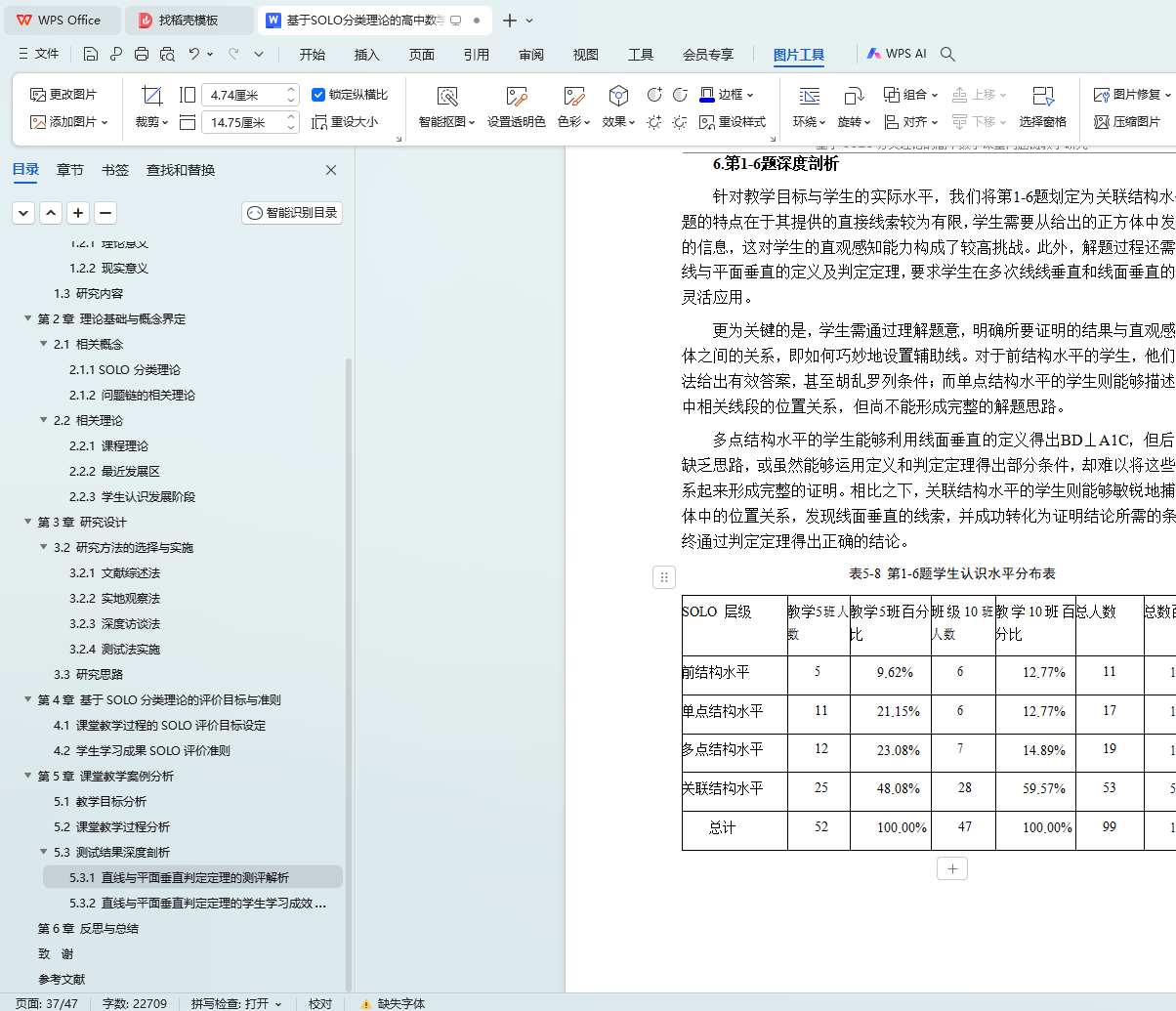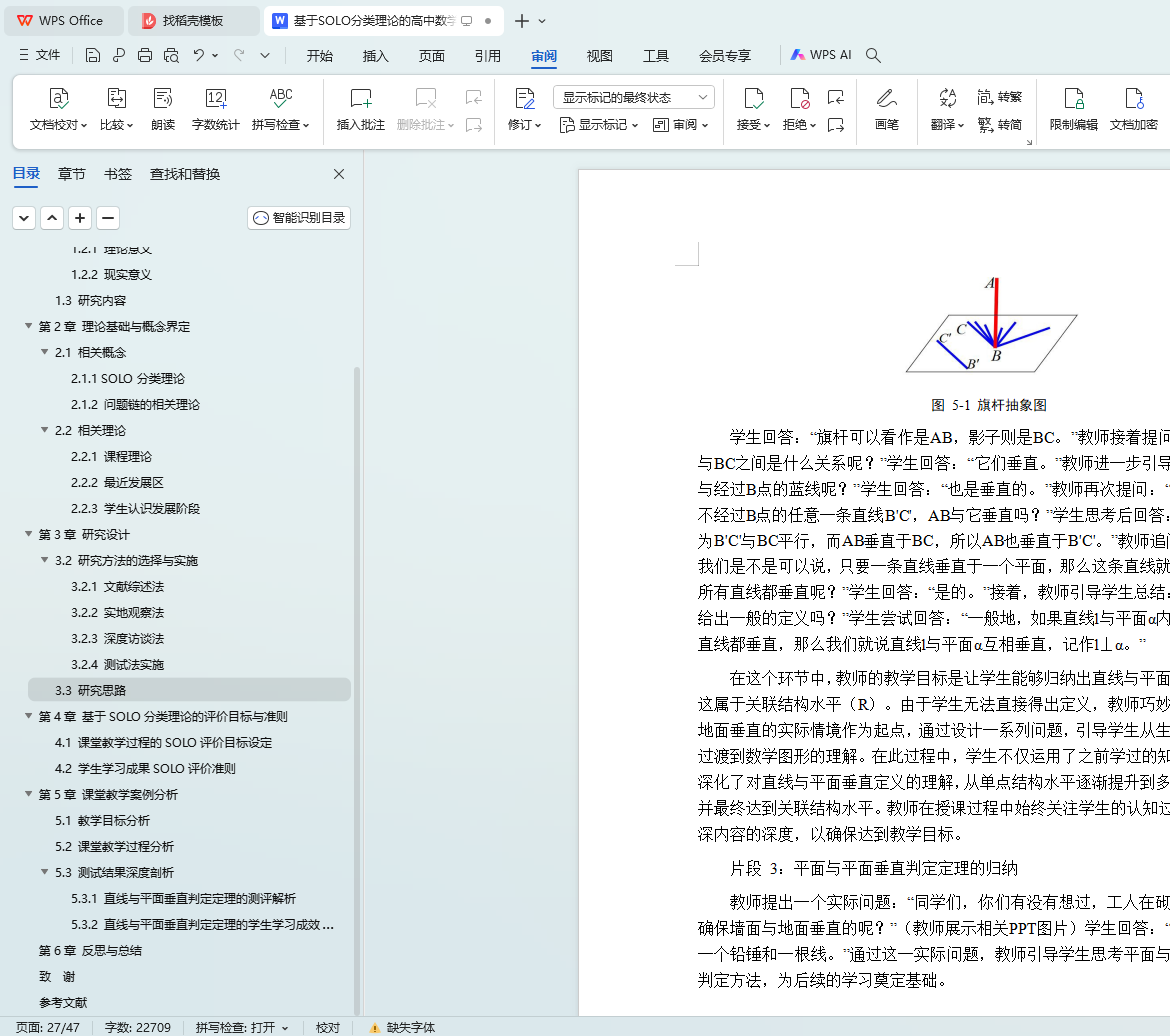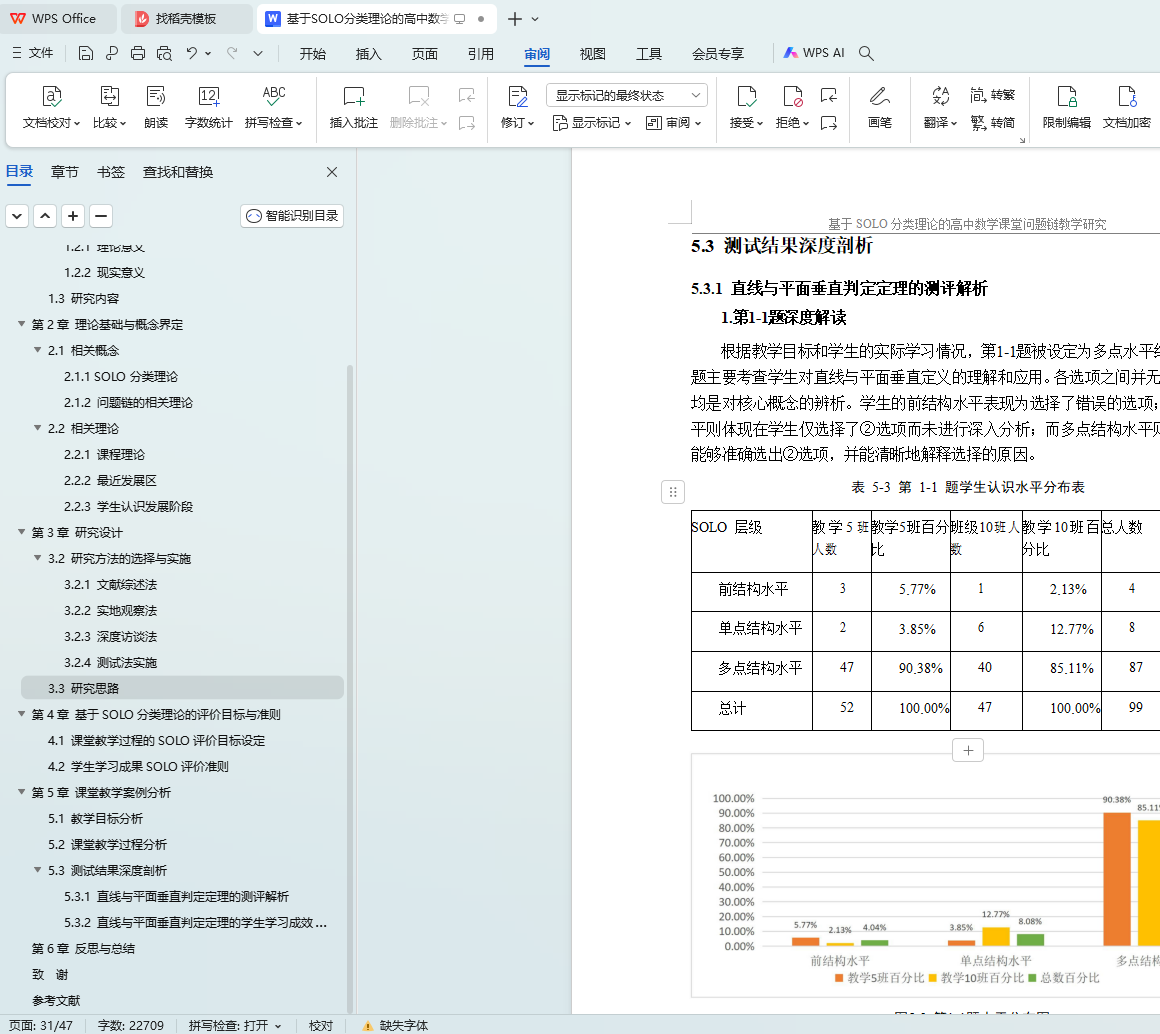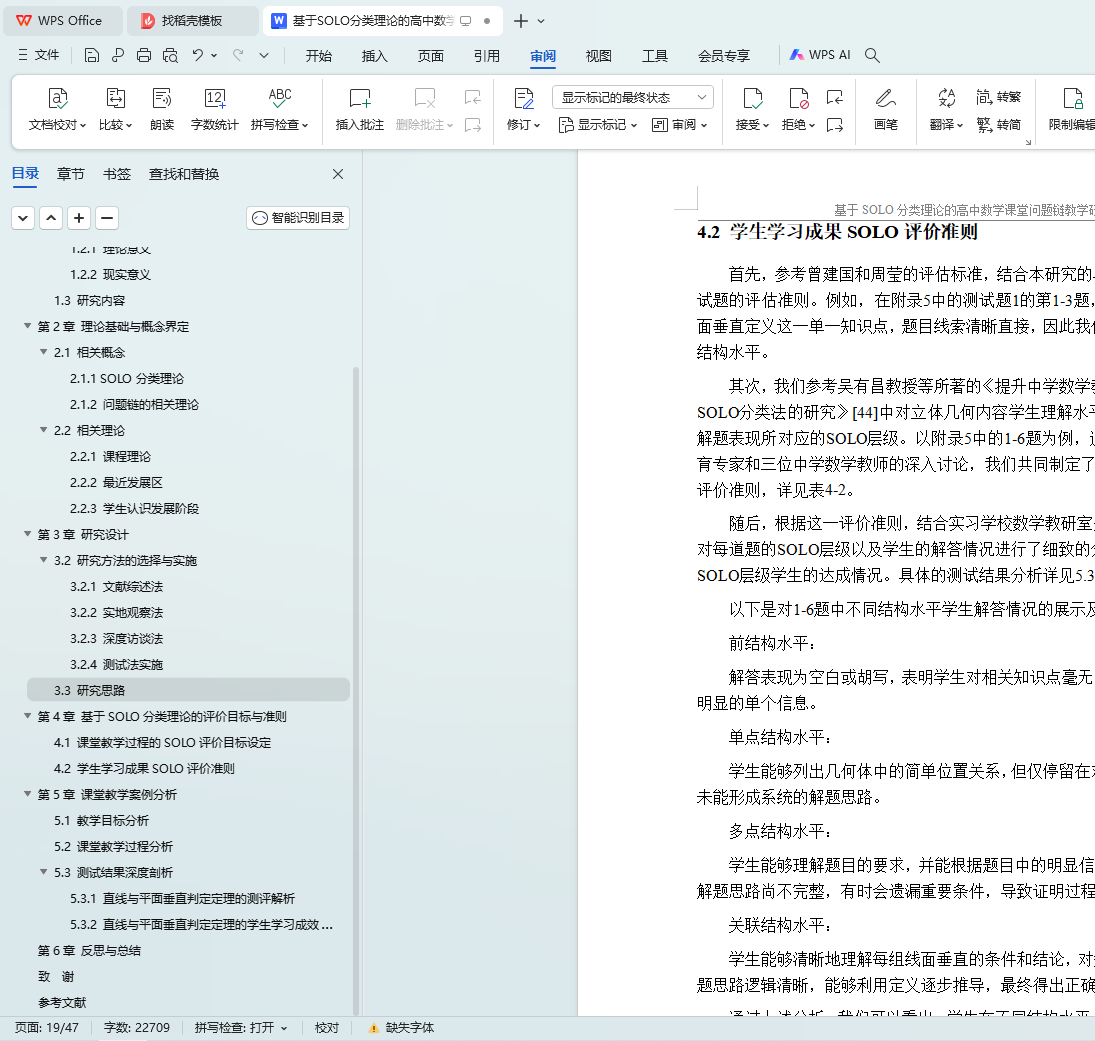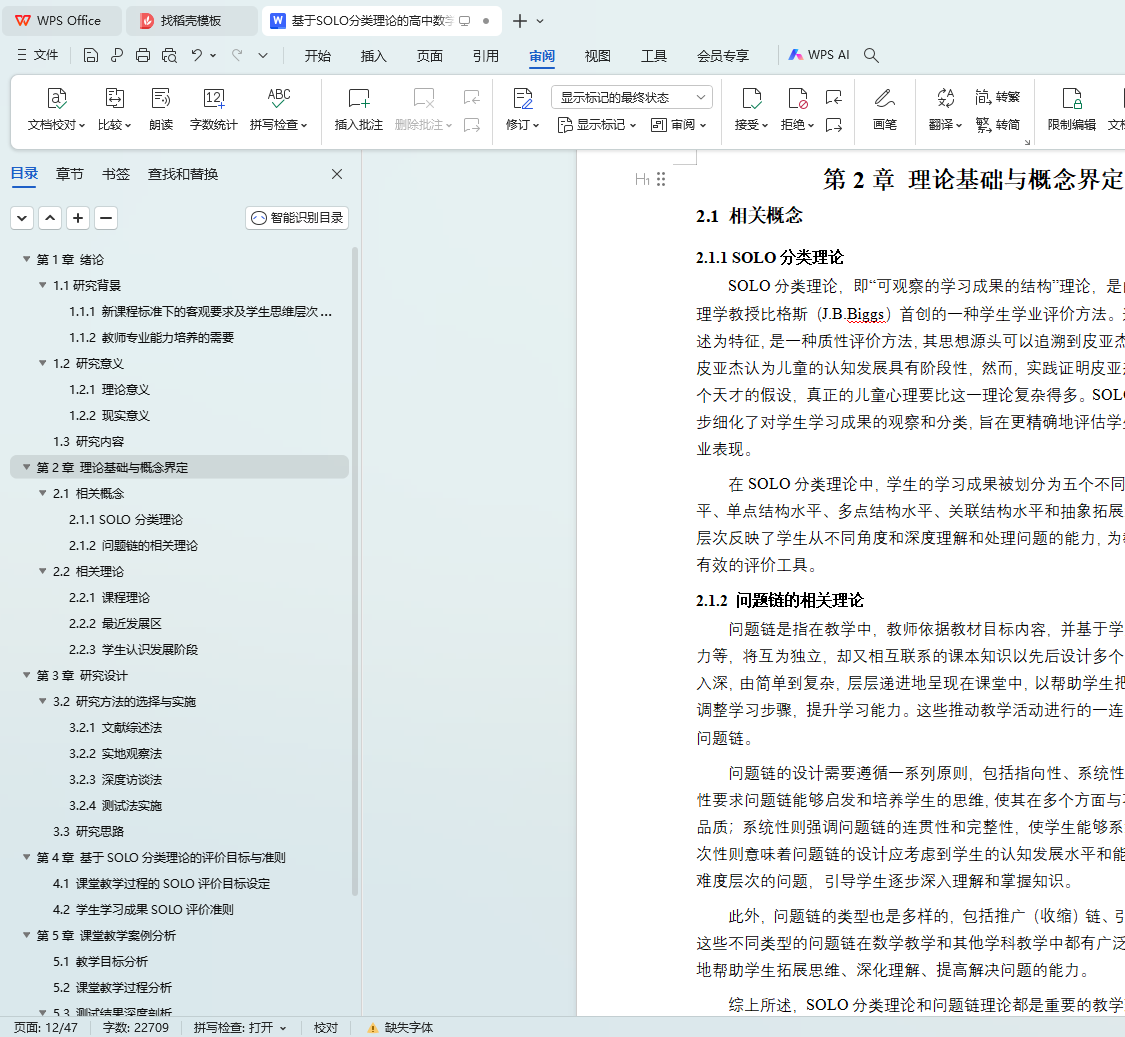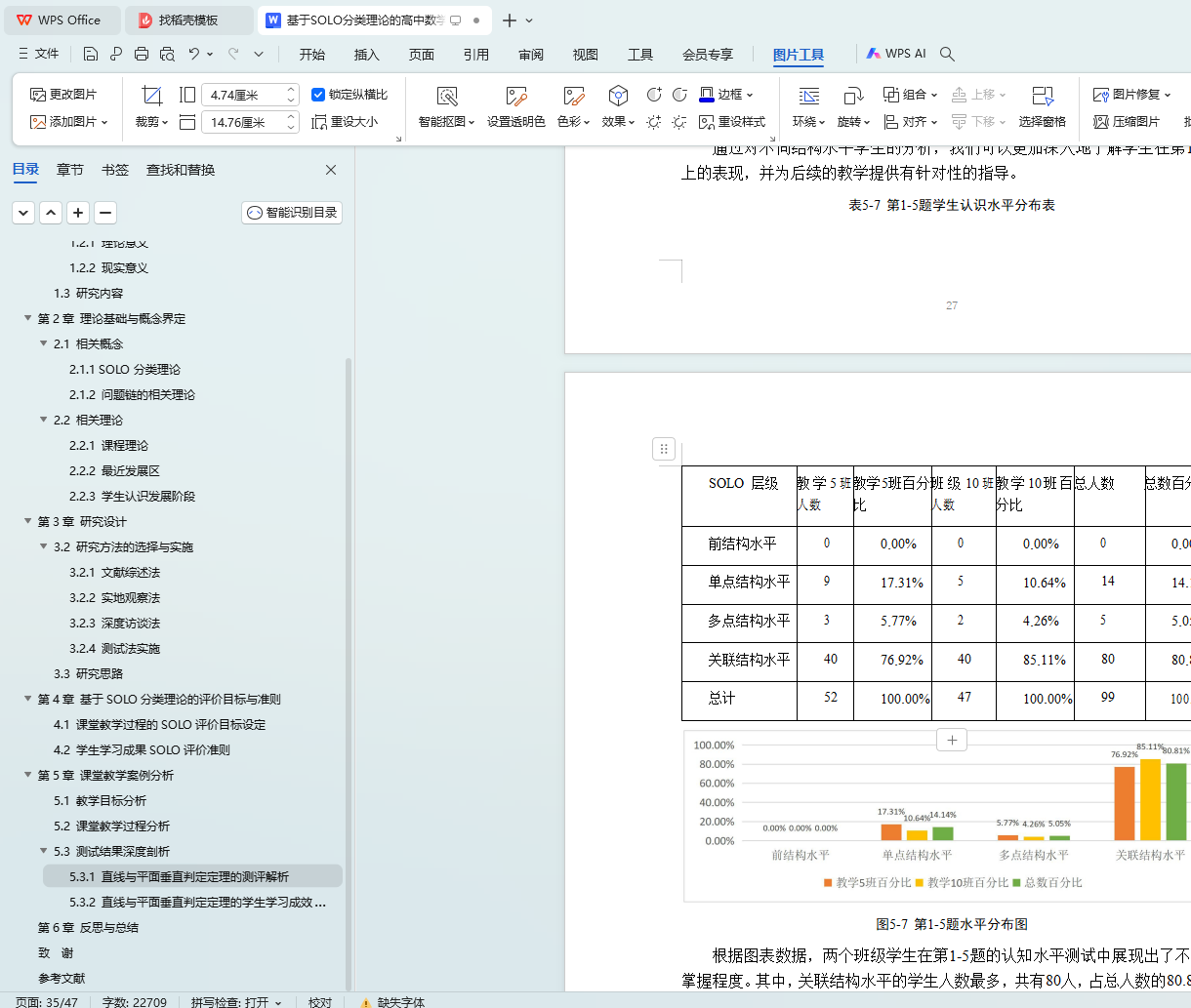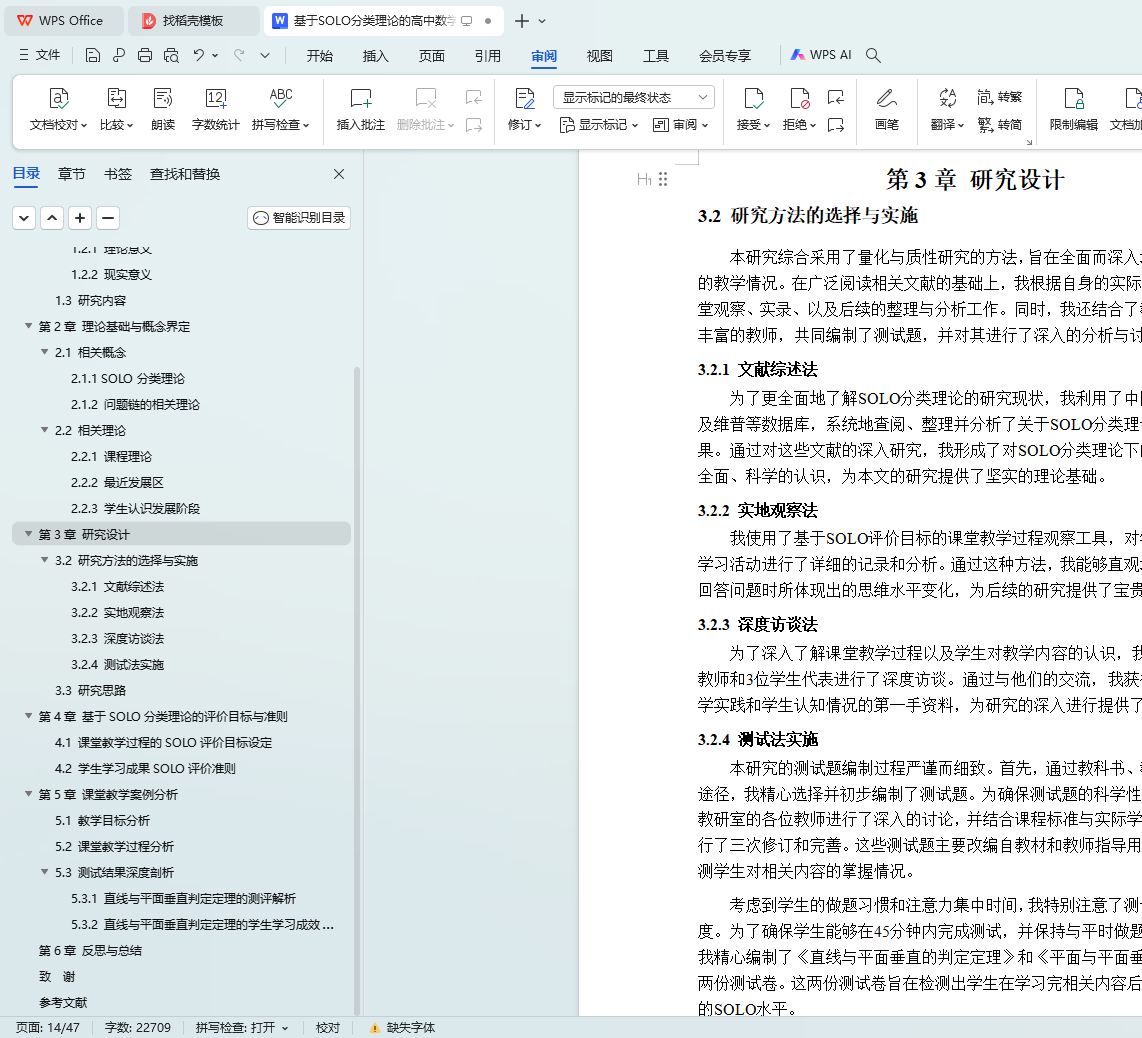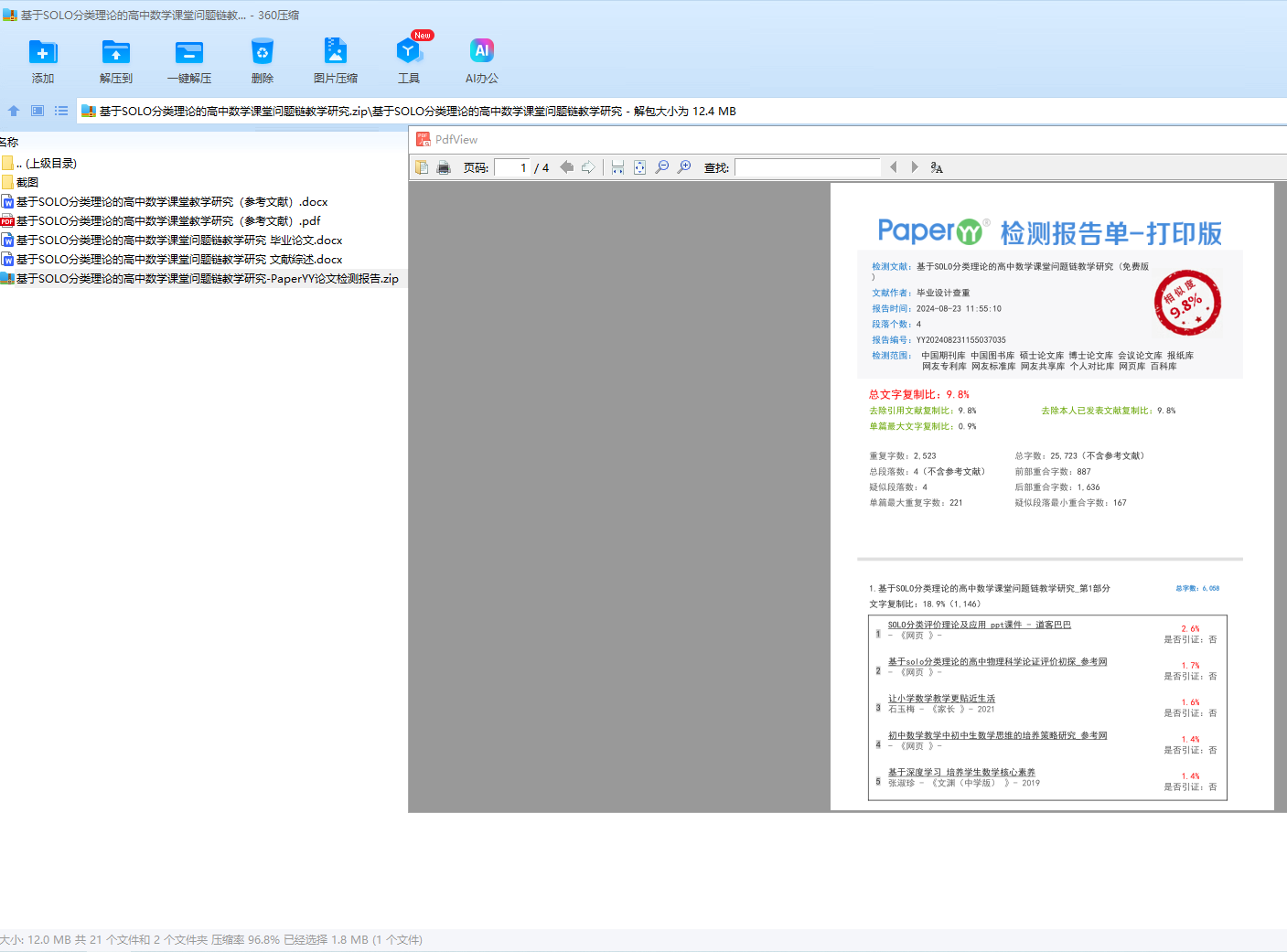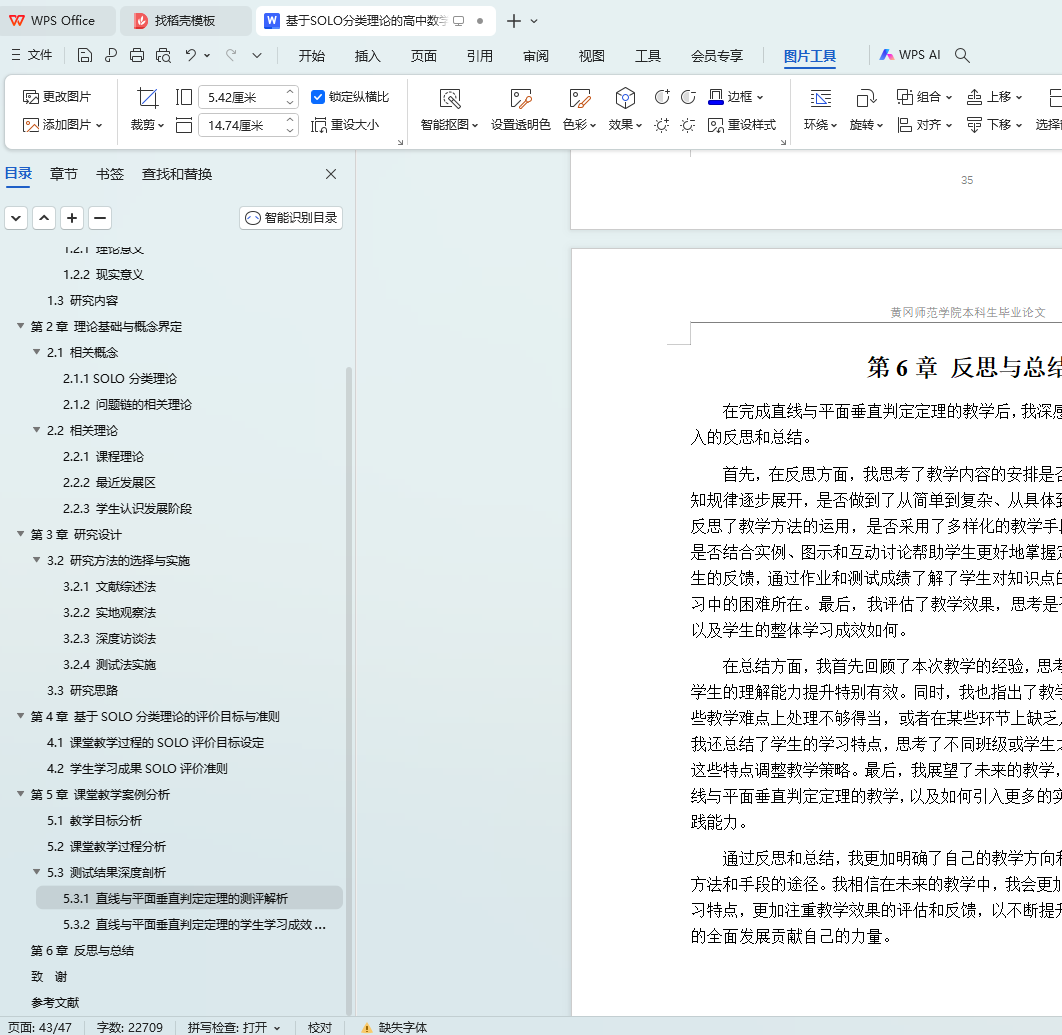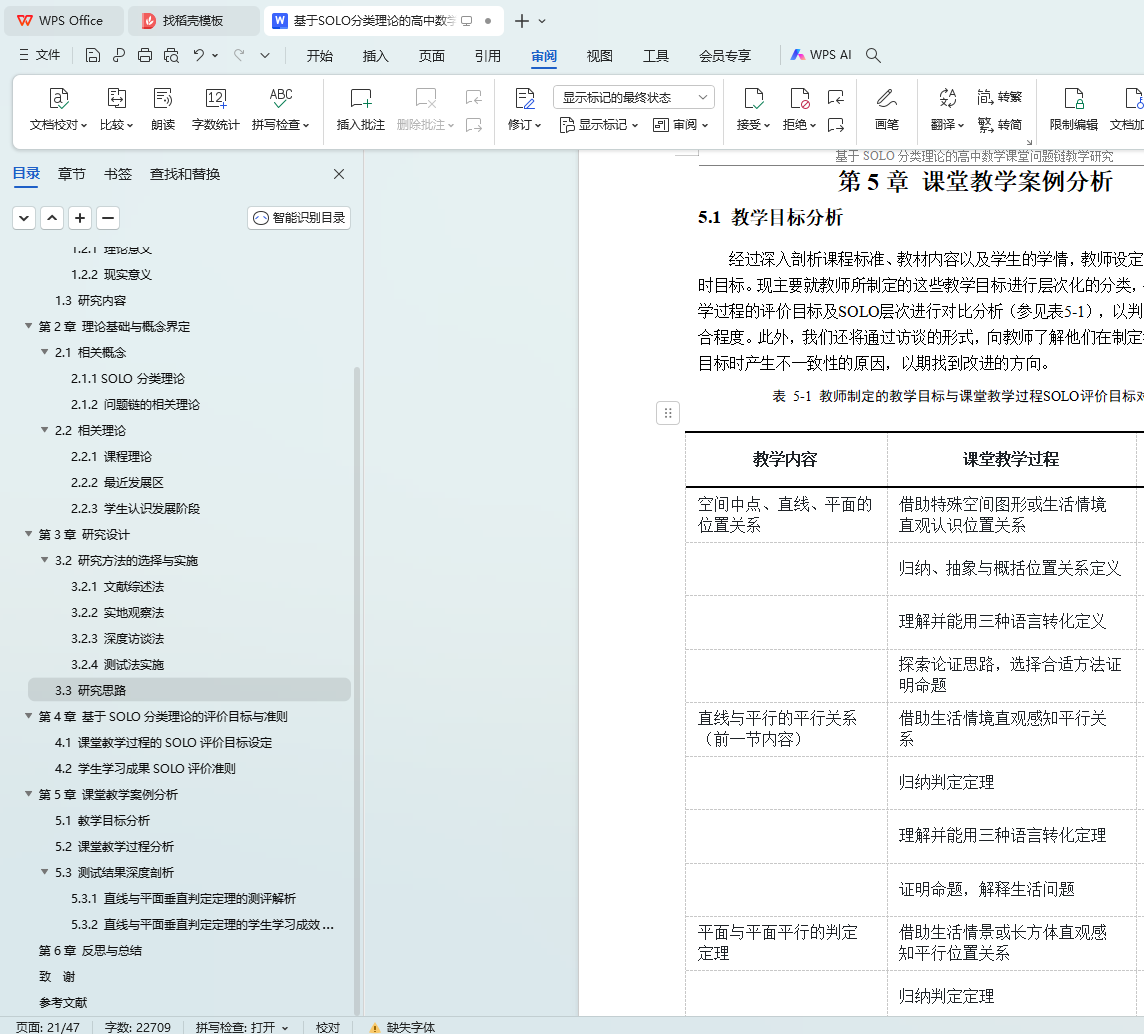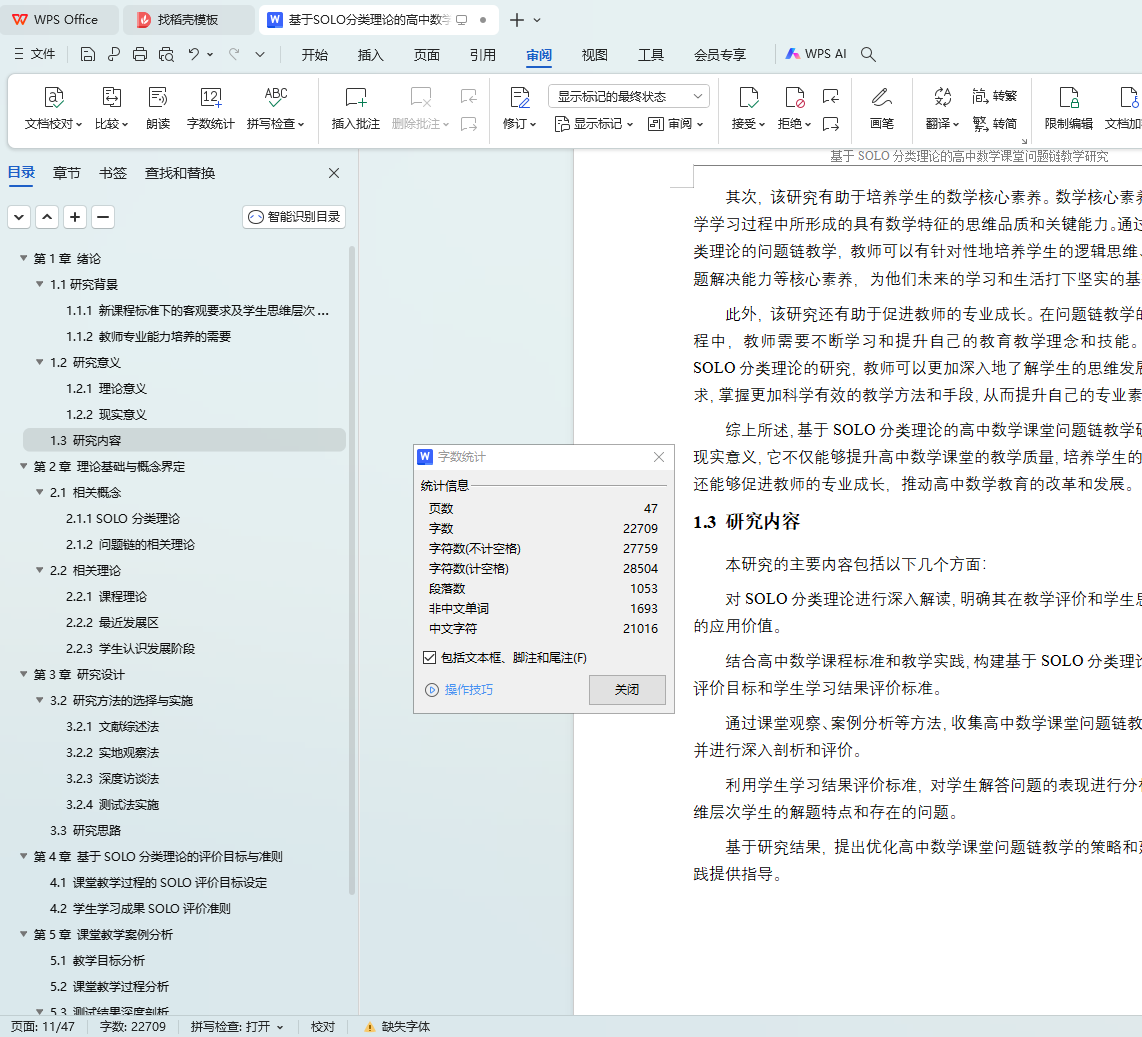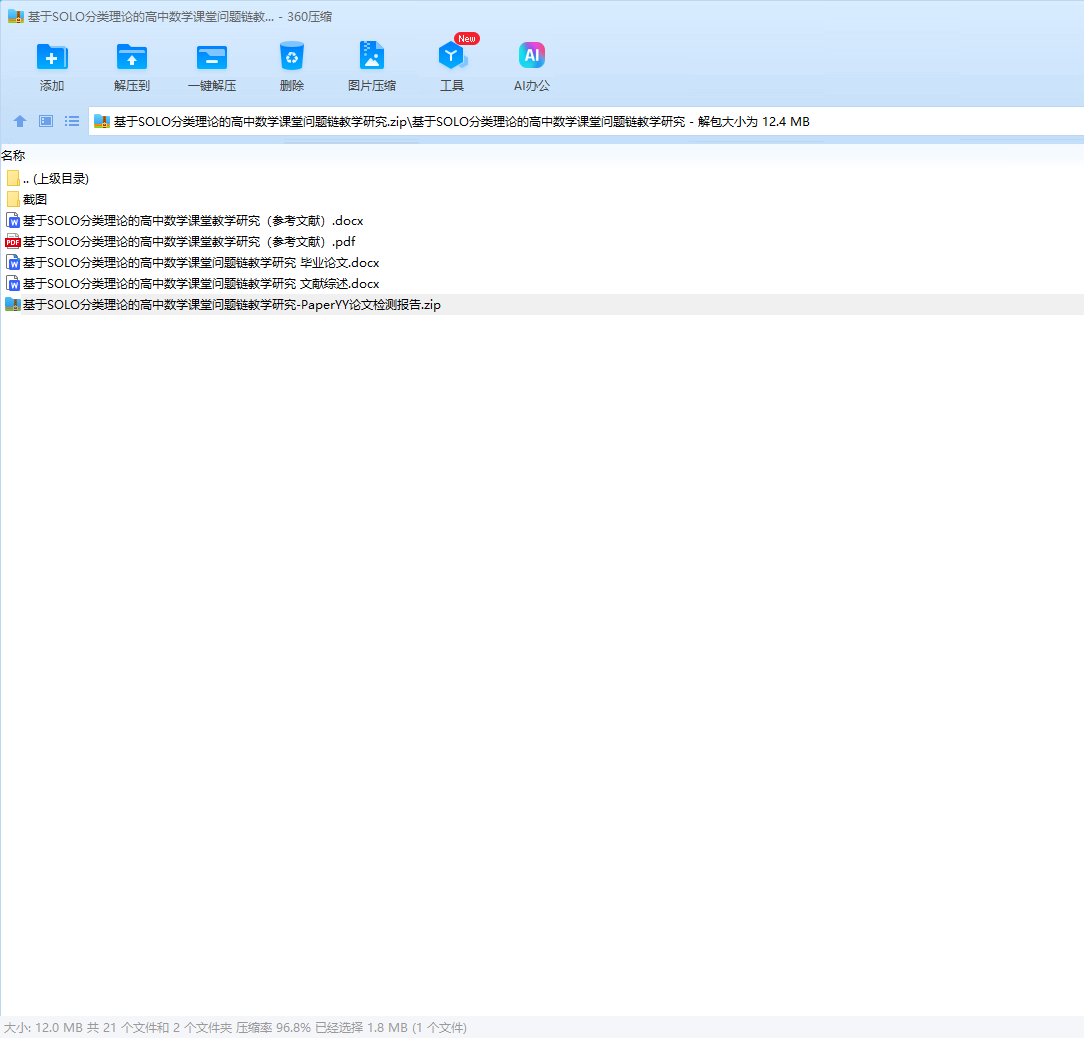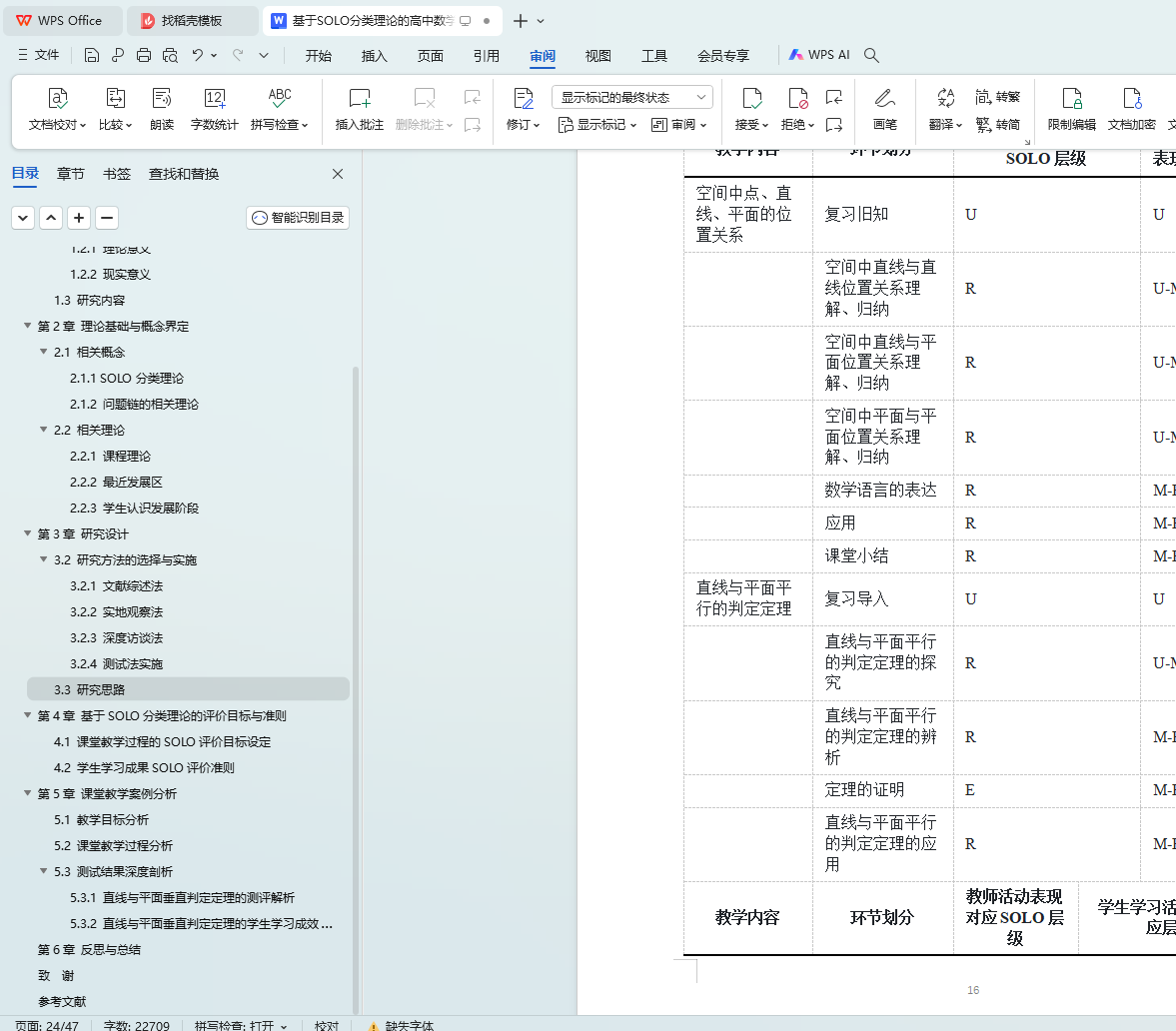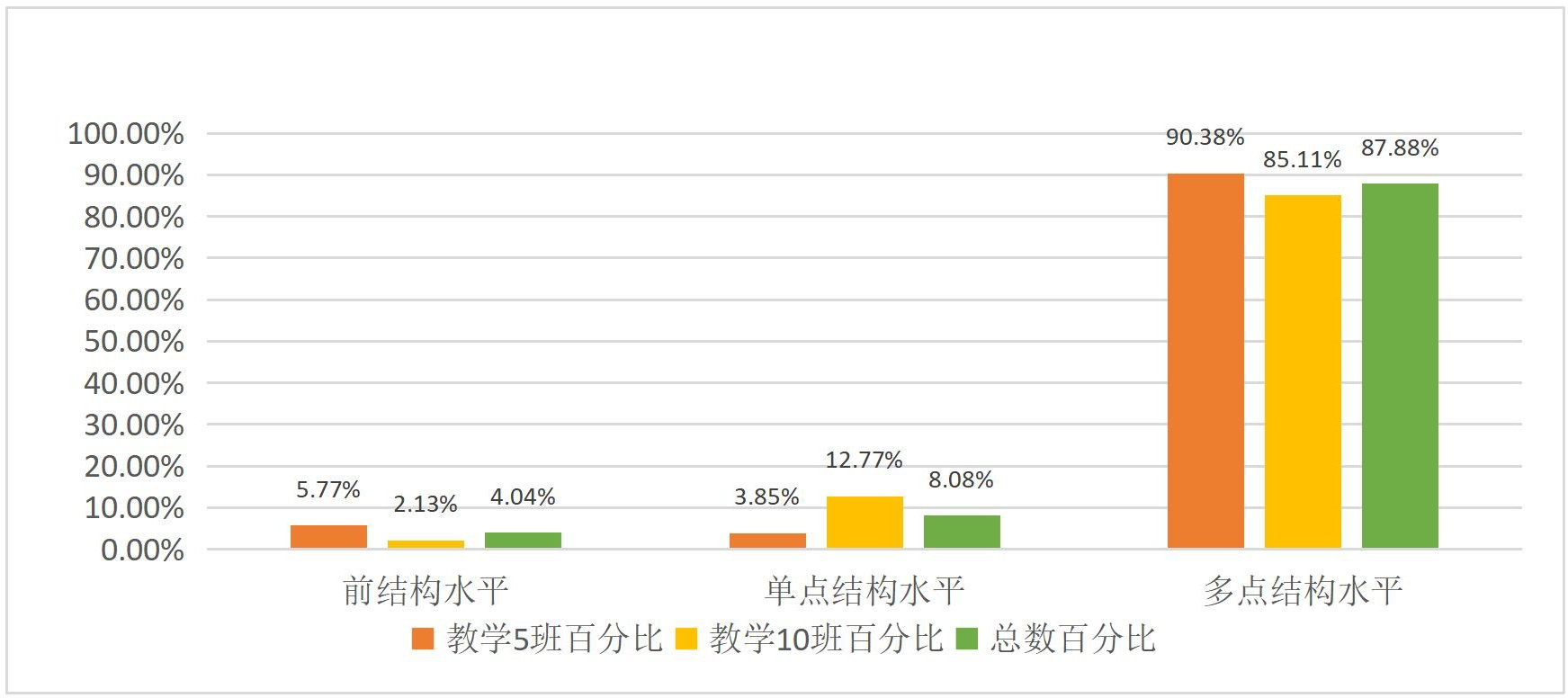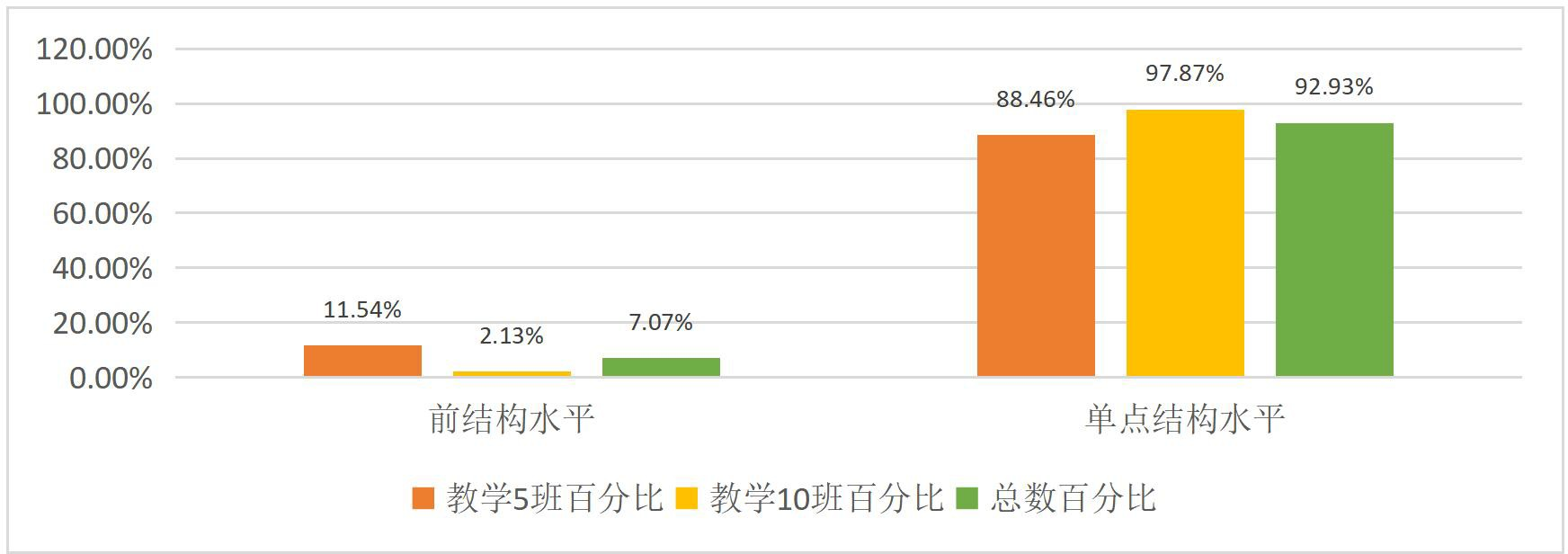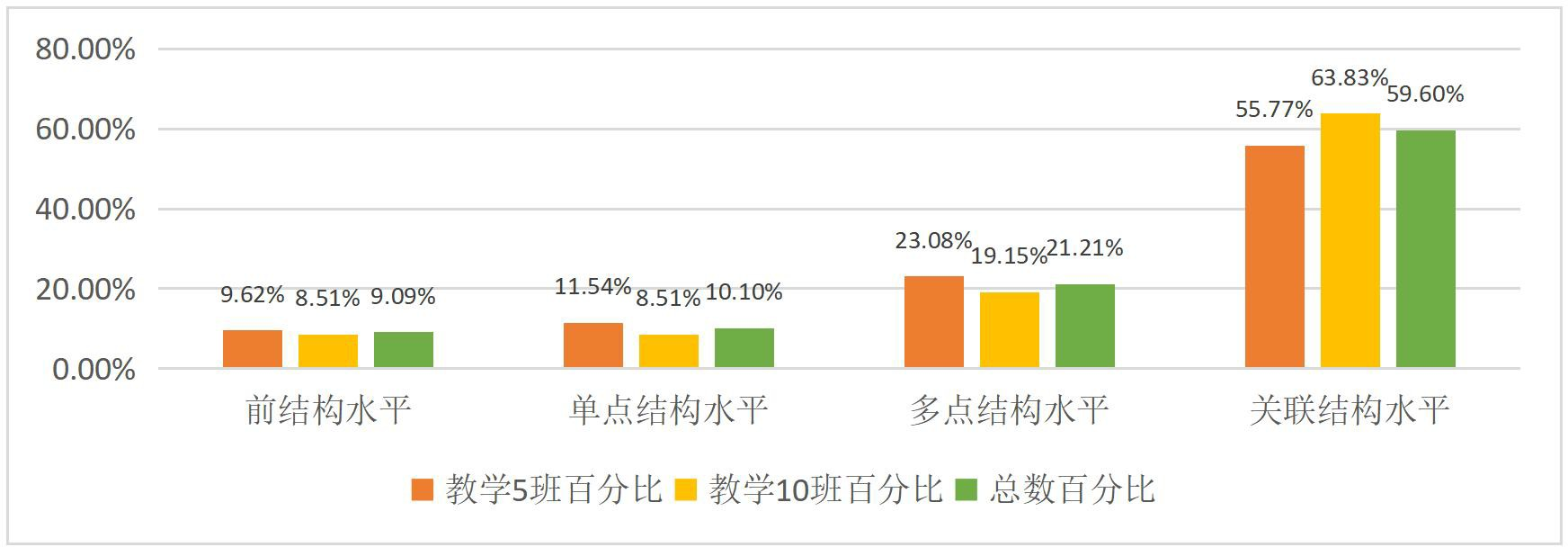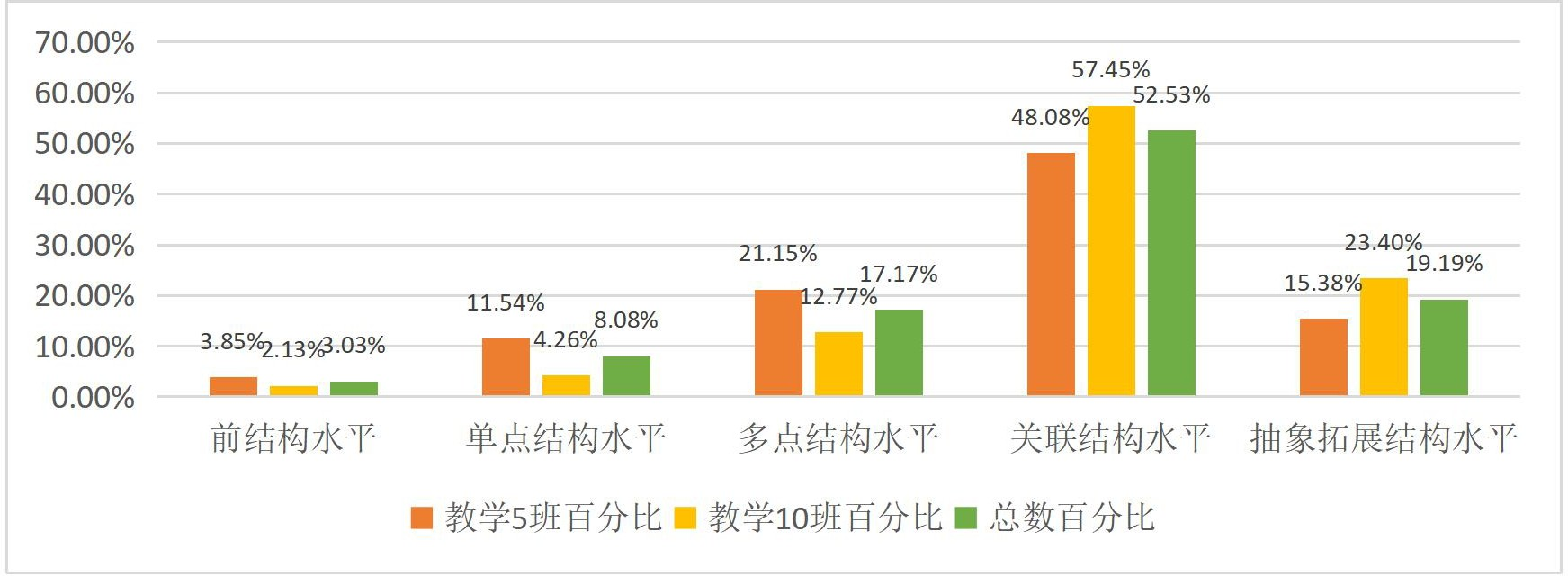摘 要
本研究选题来源于对当前高中数学课堂问题链教学现状的深入观察和思考。随着教育改革的不断推进,如何更有效地提升学生的数学思维能力成为教育领域关注的焦点。基于solo分类理论,本研究致力于构建更为科学的评价体系,深入剖析教师在课堂教学中的问题与不足,并针对学生在解题过程中出现的难题提出针对性的教学建议。通过这一研究,我们期望能够推动高中数学课堂问题链教学的优化,进而提升学生的数学思维水平和综合素质。
本研究基于solo分类理论,对高中数学课堂问题链教学进行了深入探讨。首先,结合课程标准,构建了课堂教学过程的solo评价目标与学生学习结果的solo评价标准。其次,通过对八节课堂教学案例的完整分析,发现教师设定教学目标与评价目标的一致性,以及学生思维水平从单点结构到多点结构,最终达到关联结构的螺旋式上升过程。同时,也指出了教师在课堂教学中的不足,如直接给出简单概念和结论、单点结构问题过多、留白时间不足等。再次,以直线与平面垂直、平面与平面垂直的判定定理测试题为例,利用学生学习结果solo评价标准对学生解答表现进行了分析,发现学生在不同思维水平题目上的达成率差异,并通过访谈揭示了学生在解题过程中存在的问题。最后,提出了注重基础知识形成过程、改变传统教学方式、关注不同思维水平学生等教学建议。本研究为高中数学课堂问题链教学的优化提供了理论支持和实践指导。
关键词:solo分类理论;高中数学;课堂问题链教学;评价目标;学生学习结果;教学建议
abstract
the topic selection of this research comes from the in-depth observation and thinking of the current situation of high school mathematics classroom problem chain teaching. with the continuous advancement of education reform, how to improve students' mathematical thinking ability more effectively has become the focus of the education field. based on thesoloclassification theory, this research is committed to building a more scientific evaluation system, deeply analyzing the problems and deficiencies of teachers in classroom teaching, and put forward targeted teaching suggestions for the problems of students in the process of solving problems. through this research, we expect to promote the optimization of high school mathematics classroom problem chain teaching, and then improve the students' mathematical thinking level and comprehensive quality.
based onsoloclassification theory, this paper discusses the problem chain teaching in high school mathematics classroom. firstly, combined with the curriculum standards, thesoloevaluation objective of the classroom teaching process and thesoloevaluation standard of the students' learning results are constructed. secondly, through the complete analysis of eight classroom teaching cases, it is found that the consistency of teachers set teaching objectives and evaluation objectives, as well as the students' thinking level from single point structure to multipoint structure, and finally achieve the spiral process of correlation structure. at the same time, it also points out the shortcomings of teachers in classroom teaching, such as directly giving simple concepts and conclusions, too much single point structure problems, lack of blank time and so on. thirdly, taking the determination theorem test of line and plane and plane and plane as an example, the performance of students was analyzed by thesoloevaluation standard of students' learning results, and the difference in the achievement rate of students in different thinking levels was found, and the problems existing by students in the process of problem solving problems were revealed through interviews. finally, the formation process of basic knowledge, changing traditional teaching methods and paying attention to students with different thinking levels. this study provides theoretical support and practical guidance for the optimization of problem chain teaching in high school mathematics classroom.
key words:soloclassification theory; high school mathematics; classroom problem chain teaching; evaluation objectives; students' learning results; and teaching suggestions
目 录
第1章 绪论
1.1研究背景
1.1.1 新课程标准下的客观要求及学生思维层次的培养
1.1.2 教师专业能力培养的需要
1.2 研究意义
1.2.1 理论意义
1.2.2 现实意义
1.3 研究内容
第2章 理论基础与概念界定
2.1 相关概念
2.1.1 solo分类理论
2.1.2 问题链的相关理论
2.2 相关理论
2.2.1 课程理论
2.2.2 最近发展区
2.2.3 学生认识发展阶段
第3章 研究设计
3.2 研究方法的选择与实施
3.2.1 文献综述法
3.2.2 实地观察法
3.2.3 深度访谈法
3.2.4 测试法实施
3.3 研究思路
第4章 基于solo分类理论的评价目标与准则
4.1 课堂教学过程的solo评价目标设定
4.2 学生学习成果solo评价准则
第5章 课堂教学案例分析
5.1 教学目标分析
5.2 课堂教学过程分析
5.3 测试结果深度剖析
5.3.1 直线与平面垂直判定定理的测评解析
5.3.2 直线与平面垂直判定定理的学生学习成效分层分析
第6章 反思与总结
致 谢
参考文献
